Americans Are Opting For Cremation Over Burial At The Highest Rate Ever
The rate at which Americans are choosing to be cremated rather than buried after their death has been rising for many years. In 2016, that rate reached an all-time high.
Fifty percent of Americans chose cremation in 2016, according to a new report by the National Funeral Directors Association. The rate of cremation in the U.S. has risen steadily over the years, going from just five percent in the 1970s to 40 percent in 2010.
The U.S. cremation rate is still much lower than countries like Japan and Switzerland, where 100 percent and 85.4 percent of those countries’ populations, respectively, are cremated. But NFDA predicts that by 2035, nearly 80 percent of Americans will be cremated after their death.
The national cremation rate exceeded the burial rate for the first time in 2015. Right now, burials fall behind cremations by just a few percentage points. But NFDA expects the gap to increase starkly over the next few years.
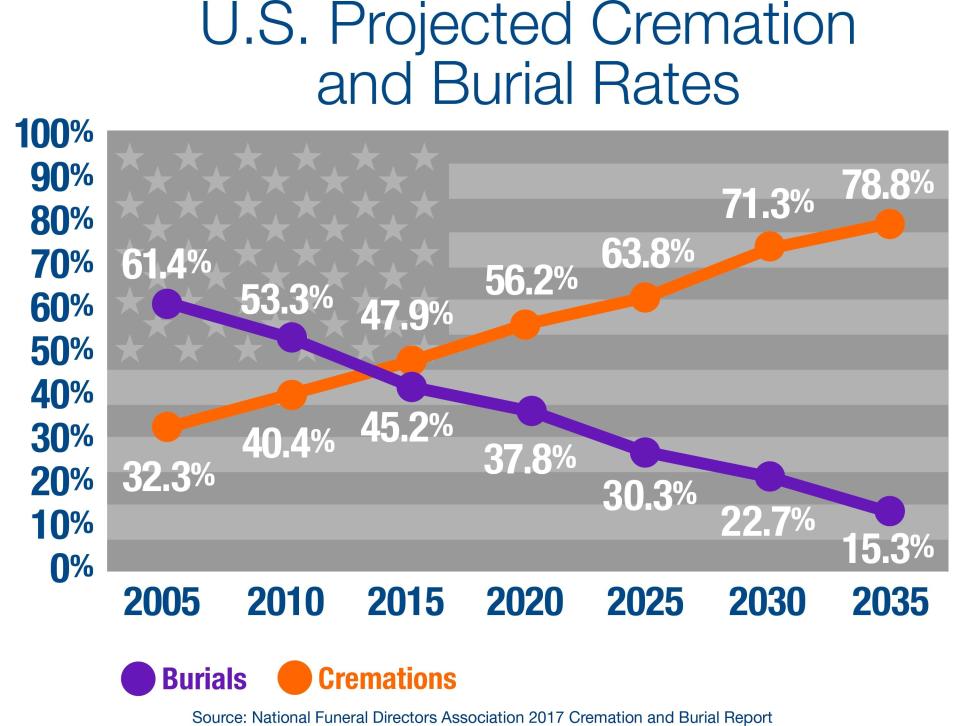
The association credits a number of factors in the dramatic rise in cremations. Kurt L. Soffe, a fourth-generation, Utah-based funeral director and a member of NFDA, said he started noticing a shift toward cremation in the 1990s and attributes the trend largely to what he calls American “individualism.”
“As I would meet with families who were arranging for the burial services of their loved ones many of those family members would say, ‘This (i.e. burial) is fine for Mom/Dad, but I just want to be cremated,’” Soffe said in an email to HuffPost.
Post-death practices also became “institutionalized” and increasingly impersonal throughout the end of the 20th century, Soffe said, as Americans started dying and being memorialized outside the home.
“In my opinion the resulting attitudes attempt to intellectualize the death experience with the thinking: the quicker we remove or dispose of the body the less emotional pain or grief or emotion we will experience or show,” he said.
NFDA also points to changes in American religion as a factor affecting funeral practices. More Americans than ever identify as religiously unaffiliated, which NFDA says “has contributed to the decline of the historically traditional funeral in America and the rise in cremation as the disposition of choice.”
“Changes in the American religious landscape are causal to increase in cremation,” Soffe said. “I have been told by many families, ‘I am spiritual, just not religious.’ We as a funeral home have performed many memorial services which have been centered around and celebrated a lifestyle, interest or hobby.”
The world’s religions are divided on the acceptability of cremation. Jewish and Islamic law have traditionally forbidden cremating the deceased. Some Christians also look down on the practice, though the Catholic Church has approved of cremations since 1963. Cremation is common among Buddhists, and it’s the mode of choice for Hindu funerals.
Those who are non-religious ― who made up nearly a quarter of American adults according to a 2014 Pew Research Center report, and whose numbers are rising ― are more likely than religious Americans to consider cremation for their deceased loved ones. NFDA also found that the percentage of U.S. adults who feel that religion is an important part of a funeral service has decreased from roughly 50 percent in 2012 to under 40 percent in 2017.
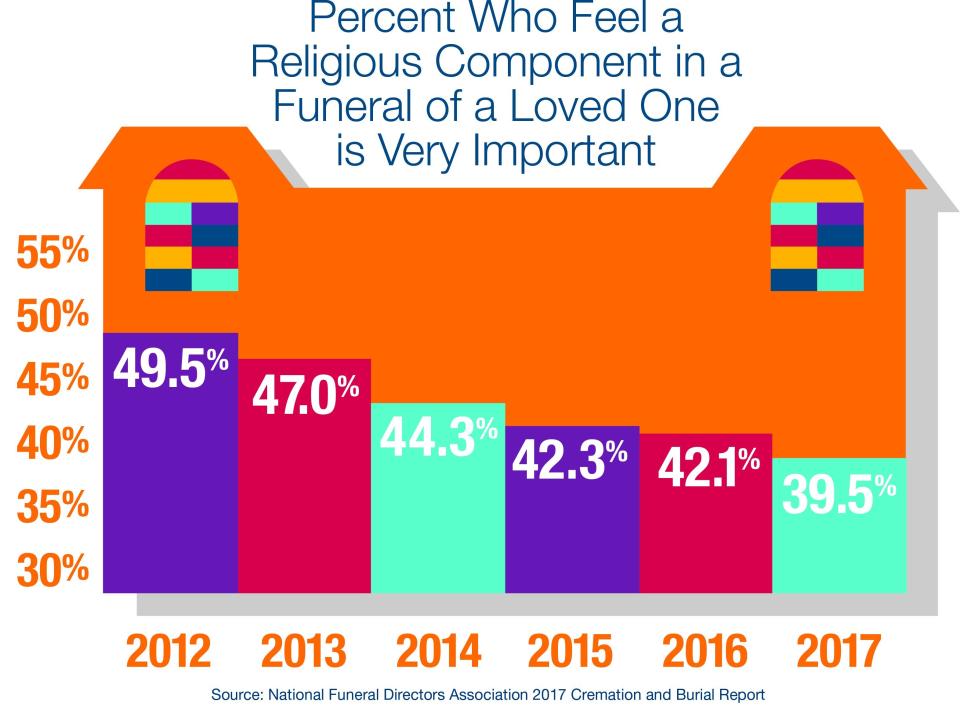
Another factor is cost. Cremations cost roughly a third of what funerals with burials cost, according to NFDA. They also tend to be more environmentally friendly, which has increasingly become a concern for many Americans.
The study also found that 47 percent of U.S. adults have attended a funeral presided over by non-clergy. Americans are also increasingly choosing to memorialize a death with family and friends instead of seeking out services from a funeral director.
Of those opting for cremation, NFDA reported that 39 percent of cremated remains are returned to families, roughly 37 percent are buried at a cemetery and less than two percent are scattered at a cemetery. Nearly 20 percent of cremated remains are scattered at non-cemetery locations.
Also on HuffPost
Love HuffPost? Become a founding member of HuffPost Plus today.
The Phantom Tollbooth, by Norton Juster
![<p>"<em>The Phantom Tollbooth</em>'s message is bracing but benign: it calls on us to rise to the challenge of the world by paying proper attention to its wonder and difficulty. Boredom and depression are far from merely childish demons, not least because an adult has to battle them for so much longer. When [main character] Milo thinks at the book's beginning that 'it seemed a great wonder that the world, which was so large, could sometimes feel so small and empty,' it must strike a chord with every reader, young or old." -- <a href="http://www.theguardian.com/books/2013/jul/17/phantom-tollbooth-norman-juster" target="_blank">The Guardian</a></p>](https://s.yimg.com/ny/api/res/1.2/4osevrDVzaMonKFleFNebQ--/YXBwaWQ9aGlnaGxhbmRlcjt3PTk2MA--/https://img.huffingtonpost.com/asset/55d2396214000077002e3191.jpg)
"The Phantom Tollbooth's message is bracing but benign: it calls on us to rise to the challenge of the world by paying proper attention to its wonder and difficulty. Boredom and depression are far from merely childish demons, not least because an adult has to battle them for so much longer. When [main character] Milo thinks at the book's beginning that 'it seemed a great wonder that the world, which was so large, could sometimes feel so small and empty,' it must strike a chord with every reader, young or old." -- The Guardian
The Opposite of Loneliness: Essays and Stories, by Marina Keegan
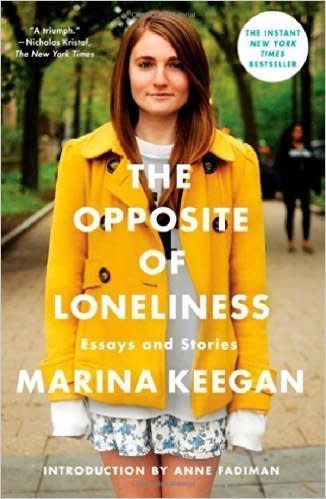
"When Marina Keegan wasn’t tapped to join one of Yale’s secret societies, she gave herself less than two hours to wallow in disappointment, then pledged to spend the time she would have spent 'chatting in a tomb' writing a book. Five days after graduation, Keegan was killed in a car accident on Cape Cod. She was 22.
'The Opposite of Loneliness' is a record of that time better spent. The book of nine short stories and nine essays takes its title from Keegan’s last essay to appear in the Yale Daily News, which went viral in the days after her death when it was read by 1.4 million people in 98 countries. In it Keegan writes with an eerie urgency: 'We can’t, we MUST not lose this sense of possibility because in the end, it’s all we have.'" -- The Boston Globe
Sophie's World, by Jostein Gaarder
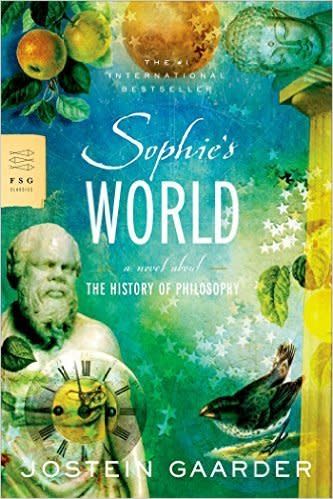
Thirst: Poems, by Mary Oliver
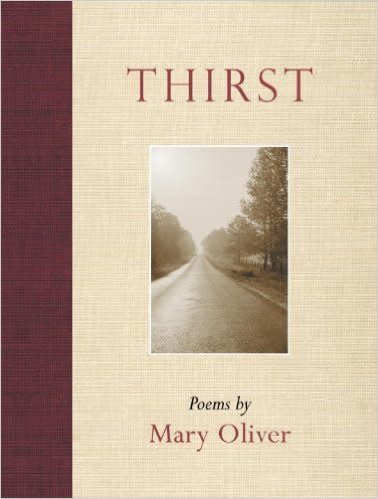
"Throughout the poems in Thirst, Oliver explores her sense of God, her understanding of faith... In 'On Thy Wondrous Works I Will Meditate,' one of her best poems, she offers a riff on the 145th psalm, stepping through the thickets of soul-searching, attempting to locate and believe in belief itself... The poem ends with a colloquy with God: 'O Lord of melons, of mercy, though I am / not ready, nor worthy, I am climbing toward you.'" -- The Guardian
Tiny Beautiful Things: Advice on Love and Life From Dear Sugar, by Cheryl Strayed
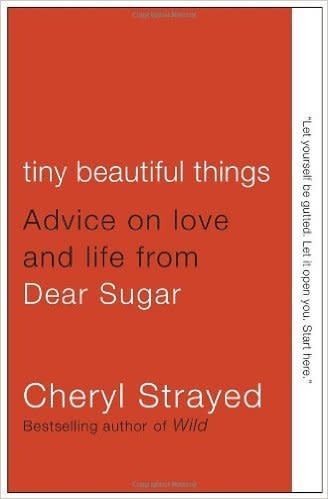
"What makes a great advice columnist? The Portland writer Cheryl Strayed has proved during her tenure at the website the Rumpus, where she has helmed the Dear Sugar column since 2010, that the only requirement is that you give great advice -- tender, frank, uplifting and unrelenting. Strayed's columns, now collected as 'Tiny Beautiful Things: Advice on Love and Life From Dear Sugar,' advise people on such diverse struggles as miscarriage, infidelity, poverty and addiction, and it's really hard to think of anyone better at the job." -- SFGate
The Little Prince, by Antoine de Saint-Exupéry
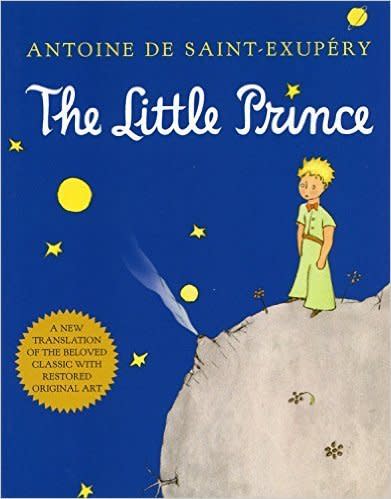
"Disguised as a children's book, Antoine de Saint-Exupéry's novella The Little Prince offers more wisdom in its very few pages than some authors can hope to produce in a lifetime. The fact that it's been translated into more than 230 languages from the original French is proof that its message resonates worldwide." -- The Huffington Post
The Year of Magical Thinking, by Joan Didion
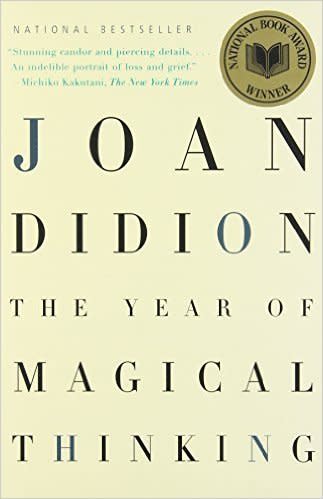
The Alchemist, by Paulo Coelho
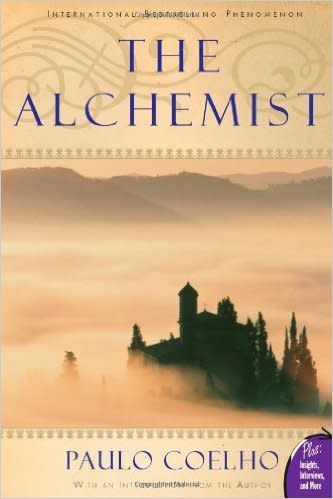
"The charming tale of Santiago, a shepherd boy, who dreams of seeing the world, is compelling in its own right, but gains resonance through the many lessons Santiago learns during his adventures. He journeys from Spain to Morocco in search of worldly success, and eventually to Egypt, where a fateful encounter with an alchemist brings him at last to self-understanding and spiritual enlightenment." -- Publishers Weekly
The Red Tent, by Anita Diamant
![<p>"In 'The Red Tent,' [Diamant] imagined a fuller life for Dinah, daughter of Jacob, whose relationship with the prince Schechem led to a brutal massacre carried out on the royal family by two of her brothers. The 'red tent' is the traditional retreat for menstruating women, and a symbol of their mutual love and support in a world dominated by men... Having given voice to one of the Bible’s silent women, she believes both genders can appreciate the perspective: 'We’ve been reading it from men’s point of view for thousands of years.'" -- <a href="https://www.bostonglobe.com/arts/2014/12/04/xxxxxx/KWZrTANDP6X2Lt7TgztWeJ/story.html" target="_blank">The Boston Globe</a></p>](https://s.yimg.com/ny/api/res/1.2/KuMI97XNsOto1C4gZyPy_A--/YXBwaWQ9aGlnaGxhbmRlcjt3PTk2MA--/https://img.huffingtonpost.com/asset/55d5461614000077002e3762.jpg)
"In 'The Red Tent,' [Diamant] imagined a fuller life for Dinah, daughter of Jacob, whose relationship with the prince Schechem led to a brutal massacre carried out on the royal family by two of her brothers. The 'red tent' is the traditional retreat for menstruating women, and a symbol of their mutual love and support in a world dominated by men... Having given voice to one of the Bible’s silent women, she believes both genders can appreciate the perspective: 'We’ve been reading it from men’s point of view for thousands of years.'" -- The Boston Globe
Mortality, by Christopher Hitchens
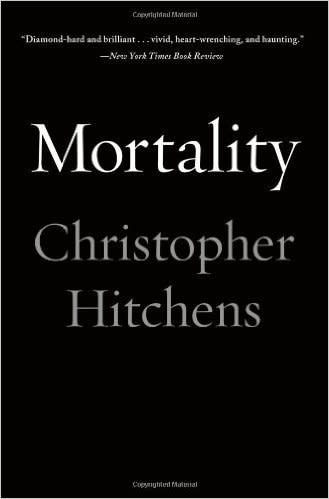
"When a consummately articulate, boundlessly bold journalist stricken with stage 4 esophageal cancer reports from the front lines about facing what he calls, among other things, 'hello darkness my old friend,' you sit up and pay attention. Mortality, by virtue of its ultimate unavoidability, raises questions about the very meaning of life, making it as challenging a subject as any tackled by Christopher Hitchens in his brilliant career." -- NPR
The God of Small Things, by Arundhati Roy
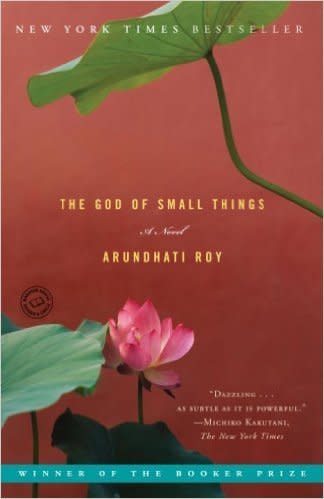
Mother Night, by Kurt Vonnegut
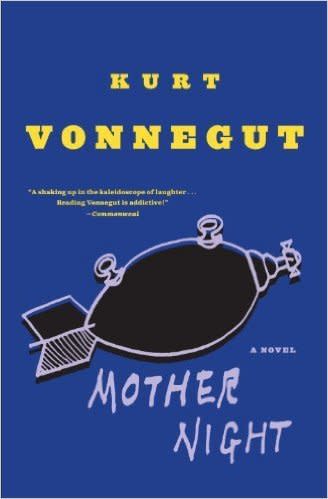
"Howard Campbell, Jr., the narrator of 'Mother Night,' is an American writer living in Germany when the Nazis come to power. He is recruited by United States military intelligence to be a spy when World War II begins. As a respected playwright married to a popular German actress, Campbell easily ingratiates himself to the Nazis and offers his services as an anti-semite... The author reminds us that no matter how righteous our cause, no matter how insane and evil our enemy, we must be careful how we act if we want to keep our souls as artists and humans. True in World War II, true in the sixties, true now." -- Mark Lindquist
The Shack, by Wm. Paul Young
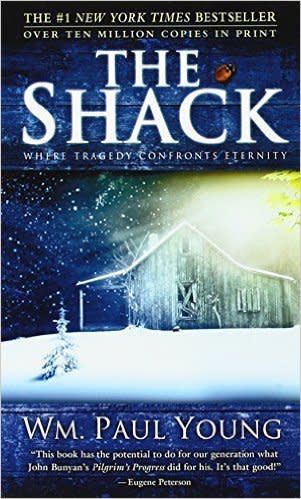
"America often gets lampooned as a nation of Jesus freaks, but it's even more a country caught up in the never-ending search for authenticity. Young's too-weird-for-the-pulpit thoughts about how Adam's rib and the female uterus form a 'circle of relationship' have the appeal of knobby heirloom-produce in a world where much religion arrives vacuum-packed. His theories -- how to believe in Adam while supporting particle-physics research; why the Lord is OK with your preference for lewd funk more than staid church music -- accomplish what mainstream faiths tend to fail at: connecting recondite doctrine to the tastes, rhythms, and mores of modern life." -- Slate
The Dude and the Zen Master, by Jeff Bridges and Bernie Glassman
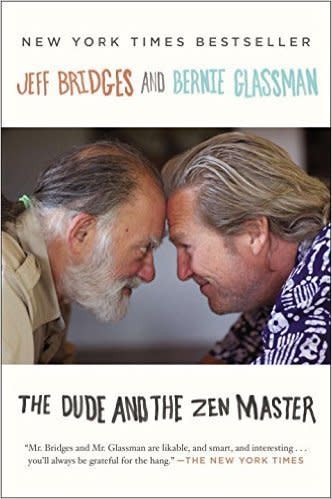
"At a party about 15 years ago, Jeff Bridges found himself seated between spiritual leaders Bernie Glassman and Ram Dass, which led to an unexpected conversation about the parallels between The Dude, Bridges' iconic character in 'The Big Lebowski,' and the tenets of Buddhism... That conversation evolved into The Dude and the Zen Master, a book by Bridges and Glassman that captures their dialogue about the nature of spirituality." -- The Huffington Post
How Should a Person Be?, by Sheila Heti
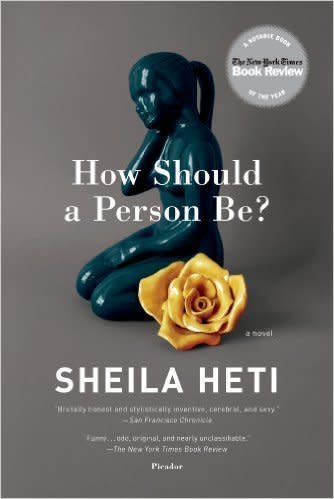
"Heti has cited 'The Hills,' the bygone MTV show about young people in Los Angeles, as one of the primary influences on 'How Should a Person Be?'... The novel shares with much reality television a kind of episodic aimlessness, and a focus on young, self-involved characters who spend a lot of time thinking about how they look to other people. In the hands of another novelist, this debt to reality television might lead to a biting indictment of the shallowness of the culture. But that is not what happens here. Heti sees the silliness in the desire for fame that drives such fare, but she also knows that same desire is involved in the impulse to make art." -- The New York Times
The Book: On the Taboo Against Knowing Who You Are, by Alan Watts
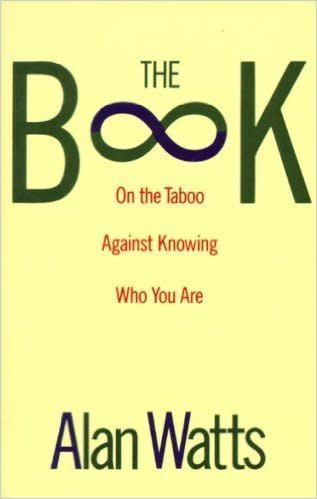
"Envisioned as a packet of essential advice a parent might hand down to his child on the brink of adulthood as initiation into the central mystery of life, this existential manual is rooted in what Watts calls 'a cross-fertilization of Western science with an Eastern intuition.' Though strictly nonreligious, the book explores many of the core inquiries which religions have historically tried to address -- the problems of life and love, death and sorrow, the universe and our place in it, what it means to have an 'I' at the center of our experience, and what the meaning of existence might be." -- Brain Pickings
Persepolis: The Story of a Childhood, by Marjane Satrapi
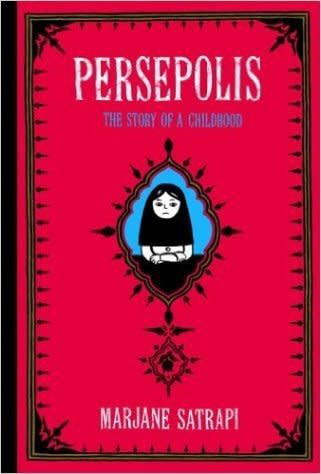
"Marjane Satrapi's 'Persepolis' is the latest and one of the most delectable examples of a booming postmodern genre: autobiography by comic book... Satrapi's book combines political history and memoir, portraying a country's 20th-century upheavals through the story of one family. Her protagonist is Marji, a tough, sassy little Iranian girl, bent on prying from her evasive elders if not truth, at least a credible explanation of the travails they are living through... The book is full of bittersweet drawings of Marji's tête-à-têtes with God, who resembles Marx, 'though Marx's hair was a bit curlier.'" -- The New York Times
The Time Machine, by H.G. Wells
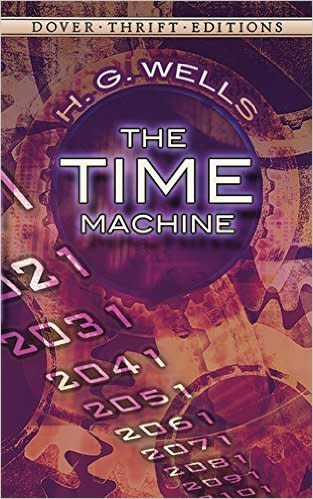
"The book was a brilliant combination of scientific speculation, sociological treatise and exciting storytelling. It not only gave popular culture the notion of time as a physical dimension; it also offered a parable of class warfare in which two futuristic races, the above-ground Eloi and the subterranean Morlocks, stood in for the working and leisure classes of Wells's time... The novel is a pessimistic look into the future and a downbeat statement about human evolution." -- The New York Times
The Last Lecture, by Randy Pausch with Jeffrey Zaslow
![<p style="outline: none; color: #333333; font-family: Georgia, 'Times New Roman', serif; line-height: 23px !important; font-size: 16px !important;">"[This] last lecture, which Pausch entitled 'Really achieving your childhood dreams,' takes as its theme his youthful ambitions: how he achieved them, and how he helped others to achieve theirs. He doesn't discuss spirituality or religion, but speaks with the simple authority of a man who is looking death in the face and assessing what's really important about life. 'Never lose the childlike wonder,' he advises. 'Show gratitude... Don't complain; just work harder... Never give up.'" -- <a href="http://www.independent.co.uk/news/people/profiles/randy-pausch-the-dying-man-who-taught-america-how-to-live-800182.html" target="_blank">The Independent</a></p>](https://s.yimg.com/ny/api/res/1.2/jo0a4JRGQ7FV6P2KhPQQ8g--/YXBwaWQ9aGlnaGxhbmRlcjt3PTk2MA--/https://img.huffingtonpost.com/asset/55d350321400002e002e32b8.jpg)
"[This] last lecture, which Pausch entitled 'Really achieving your childhood dreams,' takes as its theme his youthful ambitions: how he achieved them, and how he helped others to achieve theirs. He doesn't discuss spirituality or religion, but speaks with the simple authority of a man who is looking death in the face and assessing what's really important about life. 'Never lose the childlike wonder,' he advises. 'Show gratitude... Don't complain; just work harder... Never give up.'" -- The Independent
Letters to a Young Poet, by Rainer Maria Rilke
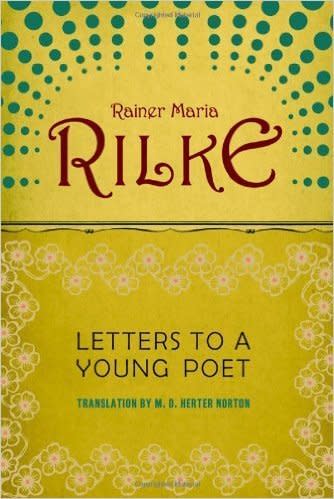
Long Day's Journey into Night, by Eugene O'Neill
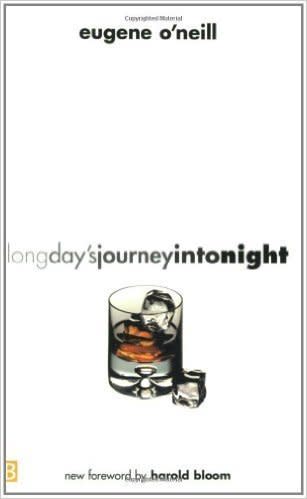
Autobiography of a Yogi, by Paramahansa Yogananda
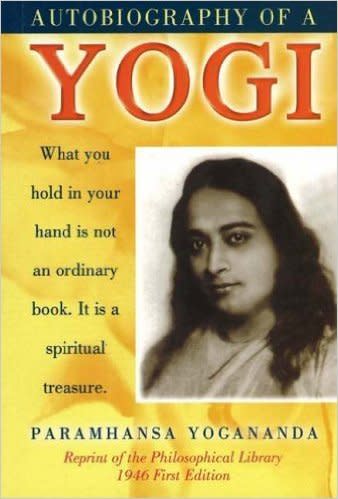
"Yogananda is best known for his groundbreaking memoir, 'Autobiography of a Yogi.' It has sold well over four million copies since its publication in 1947, and I suspect it has been read by two or three times that many, because it is the sort of book people lend to their friends. This was especially true in the 1960s and '70s, when Baby Boomer seekers were thirsty for Eastern wisdom and couldn't afford the five bucks to buy the AY, as it has come to be known... The AY prompted more Americans to explore Indian spirituality than any other text." -- Philip Goldberg, The Huffington Post
A Guide to the Bodhisattva Way of Life, by Santideva
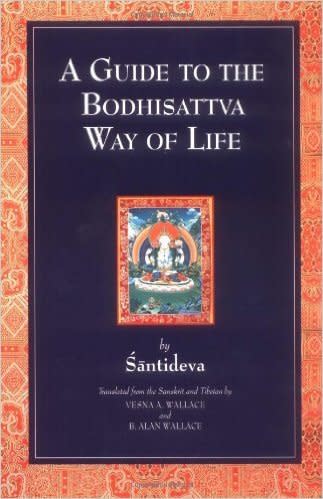
"This book is a translation of a famous and universally loved poem for daily living composed by the 8th century Buddhist Sage Shantideva. It charts the spiritual journey of a Bodhisattva, one who is committed to attaining full enlightenment for the sake of all living beings. The poem is written from the point of view of a practitioner and provides an extraordinary insight into the process of inner transformation one goes through while traversing the Bodhisattva path." -- Kadampa.org
A Gift of Love: Sermons from Strength to Love and Other Preachings, by the Rev. Dr. Martin Luther King Jr.
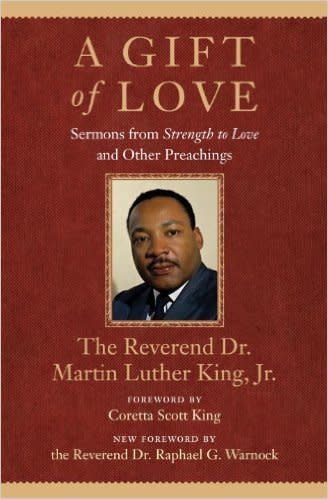
Man's Search for Meaning, by Viktor E. Frankl
![<!-- [if gte mso 9]><xml> <o:OfficeDocumentSettings> <o:AllowPNG/> </o:OfficeDocumentSettings> </xml><![endif]--> <p>"The book begins with a lengthy, austere, and deeply moving personal essay about Frankl's imprisonment in Auschwitz and other concentration camps for five years, and his struggle during this time to find reasons to live. The second part of the book, called 'Logotherapy in a Nutshell,' describes the psychotherapeutic method that Frankl pioneered as a result of his experiences in the concentration camps. Freud believed that sexual instincts and urges were the driving force of humanity's life; Frankl, by contrast, believes that man's deepest desire is to search for meaning and purpose... 'Our generation is realistic, for we have come to know man as he really is,' Frankl writes. 'After all, man is that being who invented the gas chambers of Auschwitz; however, he is also that being who entered those gas chambers upright, with the Lord's Prayer or the Shema Yisrael on his lips.'" -- <a href="http://www.amazon.com/Mans-Search-Meaning-Viktor-Frankl/dp/0671023373" target="_blank">Amazon review</a> </p>](https://s.yimg.com/ny/api/res/1.2/Rjhj9DWe.4GYOHbyLgON7w--/YXBwaWQ9aGlnaGxhbmRlcjt3PTk2MA--/https://img.huffingtonpost.com/asset/55d209821400002e002e3117.jpg)
"The book begins with a lengthy, austere, and deeply moving personal essay about Frankl's imprisonment in Auschwitz and other concentration camps for five years, and his struggle during this time to find reasons to live. The second part of the book, called 'Logotherapy in a Nutshell,' describes the psychotherapeutic method that Frankl pioneered as a result of his experiences in the concentration camps. Freud believed that sexual instincts and urges were the driving force of humanity's life; Frankl, by contrast, believes that man's deepest desire is to search for meaning and purpose... 'Our generation is realistic, for we have come to know man as he really is,' Frankl writes. 'After all, man is that being who invented the gas chambers of Auschwitz; however, he is also that being who entered those gas chambers upright, with the Lord's Prayer or the Shema Yisrael on his lips.'" -- Amazon review
Daring Greatly: How the Courage to Be Vulnerable Transforms the Way We Live, Love, Parent, and Lead, by Brené Brown
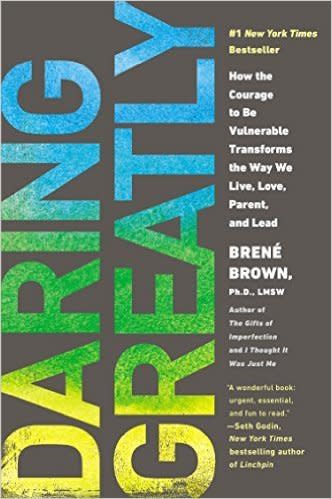
"Brené Brown, a research professor at the University of Houston Graduate College of Social Work, is the first to admit that vulnerability makes her uncomfortable, but posits that daring to fail is the only true way to be wholeheartedly engaged in any aspect of life. 'Experiencing vulnerability isn’t a choice -- the only choice we have is how we’re going to respond when we are confronted with uncertainty, risk and emotional disclosure,' she says." -- Publishers Weekly
This article originally appeared on HuffPost.

